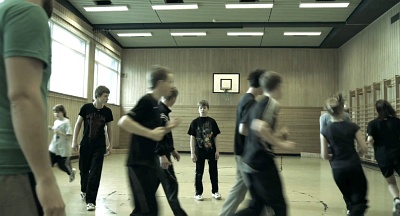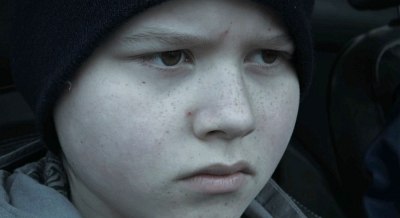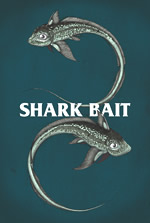Shark Bait
Film info
Title: Shark Bait
Original title: Haien kommen
Running time: 9:57 min.
Director: Toni Nordli
Country of origin: Norway, 2009
Language: Norwegian
Genre: Live action fiction
Suggested age group: 11-14 years
Synopsis
Erlend is bullied by his homophobic peers for having a gay brother. His teacher is not aware of the situation and Erlend doesn’t seek his help. After a game of ‘Shark bait’ (Tag), he is subjected to a humiliating attack.
Erlend’s brother has suffered from prejudice and he physically fought back. He thinks Erlend needs to resolve the situation by using violence and taking revenge. One day he catches one of the bullies in the act and holds him up, encouraging Erlend to hit him.
In the end, Erlend rejects his brother’s solution and shows the importance of standing up for your own values. He hugs his brother as an affirmation.
Advisory Note
Some bad language and nudity
Harsh bullying scenes
Main themes
Stereotypes
Bullying
Homophobia
Name calling
Family
Peer relations
Violence
Conflict resolution
This short film contains a large number of discussion points and needs to be broken down into scenes to make full use of its themes and its images.
The lesson notes are divided into ‘discussion points’ and it is up to the teacher to decide how to arrange the classroom (whole class, group discussion, pair work etc.) and resources (flip charts, whiteboard etc.)
The discussion points can be put to students before they watch the scenes in order to focus their attention.
Differentiation according to ability is also at the discretion of the teacher. The rabbit-fish story and its importance, for example, will be immediately apparent to some students, whilst others will need a comprehensive explanation.
Some images in the film are potentially upsetting. Again, the discretion of the teacher is required and previewing is essential. In particular, it might be an opportunity to warn of the health implications of spitting.
The film and discussion points are cross-curricular: covering the native language of study; PSHE and citizenship; drama; media/film studies; religion; and science.
Activities
A. Introduction: discussion points 1 and 2
B. Show the first sequence of the film: discussion points 3, 4 and 5
C. Show the second sequence: discussion points 6 and 7
D. Show the conclusion: discussion points 8, 9 and 10
A: Introduction
Discussion point 1: What is bullying? Establish that it is about isolating, humiliating and depriving of friends.
Discussion point 2: What is homophobia? Does it only affect lesbian, gay and bisexual people or can anyone suffer as a result of homophobia?
B: Show the film to the end of the first bullying scene (3:17)
Discussion point 3: Why is Erlend being bullied? Is it because he is sensitive; or because his brother is gay; or because the chief bully has to prove something?
Discussion point 4: At one point Erlend retaliates verbally. Was it the right thing to do? Or did it make things worse?
Discussion point 5: What could Erlend do?
C: Show the film up to and including the point where Erlend leaves his brother’s car and turns back to look at him (6:00)
Discussion point 6: What does Erlend’s brother want him to do?
Discussion point 7: Why is the rabbit-fish important? Extension activity: why does Erlend’s brother tell him the story of the rabbit-fish? Is there a moral to this story?
D: Show the film to the end.
Discussion point 8: Why do you think Erlend hugs his brother at the end?
Discussion point 9: What do you think the following people learn from this experience?
- Erlend?
- His brother?
- The boy that ran away?
Discussion point 10: How often do you hear the phrase “getting your own back” or “an eye for an eye”? Think of a film or story in which someone gets their own back on someone who has made them suffer? Was it realistic? Was the outcome satisfying? Is revenge the same as justice?
Note
For an extended activity the teacher might choose to examine the fish and the shark as a metaphor for the bully (as the predator) and the victim (as the prey). This is played out in the game of ‘Shark bait’ at the beginning and its weighty symbolism. Paradoxically, Erlend is cast in the role of ‘shark’, but this only serves to increase his sense of isolation. Erlend always looks from side to side when he is about to be attacked and his attackers look directly ahead. Does this reflect the behaviour of animals of prey and their predators in nature? Is ‘bullying’ an inherited trait that we, as humans, need to challenge in order to develop?




